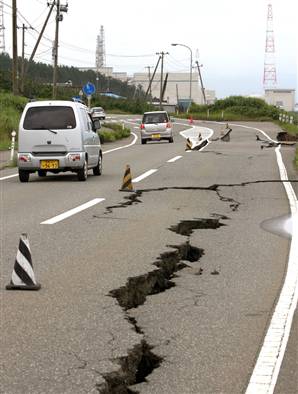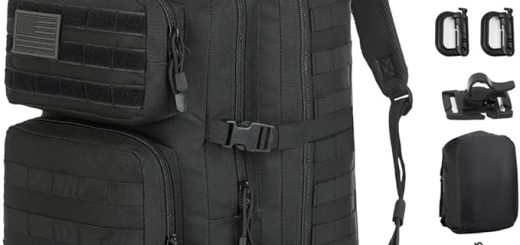Essential Items for Wilderness Survival
Introduction to Wilderness Survival
Importance of Being Prepared
Being prepared for wilderness survival is crucial. It ensures that you can handle unexpected situations and emergencies, increasing your chances of survival. Preparation involves having the right knowledge, skills, and essential survival items. This includes understanding how to use your equipment effectively and being physically and mentally ready for the challenges ahead. Proper preparation can make the difference between life and death in wilderness scenarios.
Understanding the Basics of Survival
Understanding the basics of survival is fundamental. This includes knowledge of shelter, water, food, and fire. These elements are critical for maintaining body temperature, hydration, nutrition, and warmth. Additionally, understanding how to navigate and signal for help can significantly increase your chances of being rescued. Basic first aid knowledge is also essential to treat injuries and prevent infections. Comprehensive survival knowledge equips you to handle various challenges effectively.
Shelter

Types of Shelter
Different types of shelter are suitable for various environments and situations. Common types include natural shelters like caves, improvised shelters such as lean-tos, and portable shelters like tents. Each type has its advantages and is chosen based on factors like weather conditions, available materials, and time. Knowing how to select and construct a shelter is vital for protection against the elements and wildlife.
How to Build a Shelter
Building a shelter requires understanding basic construction principles. Start by selecting a suitable location, preferably on high ground and away from hazards like falling trees. Use available materials such as branches, leaves, and rocks to create a framework. Ensure the shelter is sturdy and provides adequate insulation and ventilation. Practicing these skills beforehand can improve your efficiency and effectiveness in an actual survival situation.
Water
Finding Water Sources
Finding water sources in the wilderness is essential for survival. Look for natural sources like rivers, streams, lakes, and springs. Additionally, rainwater can be collected using tarps or containers. In some cases, water can be extracted from plants or dug from the ground in arid regions. Understanding where to find and how to collect water ensures you stay hydrated and healthy.
Purification Methods
Purifying water is crucial to avoid waterborne illnesses. Boiling is one of the most effective methods, killing pathogens through high temperatures. Filtration systems, both portable and improvised, can remove particulates and some microorganisms. Chemical purification using iodine or chlorine tablets is another option. Understanding and applying these methods ensures you have safe drinking water in the wilderness.
Food

Foraging for Edible Plants
Foraging for edible plants requires knowledge of local flora. Learn to identify safe plants and avoid toxic ones. Familiarize yourself with common edible plants in the area you plan to explore. Sources like berries, nuts, roots, and greens can provide essential nutrients. Always perform an edibility test if unsure and avoid consuming unfamiliar plants. Proper foraging skills can supplement your food supply significantly.
Hunting and Fishing
Hunting and fishing are vital survival skills. Understand the local wildlife and their habits to increase your chances of success. Use appropriate tools such as traps, snares, and fishing gear. Practice patience and stealth to avoid scaring away potential food sources. Ethical and sustainable practices ensure that wildlife populations remain healthy and available for future needs. Mastery of these skills can greatly enhance your food resources.
Fire
Importance of Fire in Survival
Fire is a crucial element in wilderness survival. It provides warmth, cooks food, purifies water, and serves as a signal for rescue. Additionally, fire can deter predators and insects. Knowing how to start and maintain a fire using various methods, such as friction, flint and steel, or a magnesium fire starter, is essential. The ability to create fire can significantly improve your comfort and safety in the wild.
Methods to Start a Fire
There are several methods to start a fire, each with its advantages. Traditional methods include using a bow drill or hand drill to create friction. Modern tools like lighters, matches, and fire starters offer convenience and reliability. The AOFAR Magnesium Fire Starter AF-374 is an excellent tool, providing a reliable spark in all weather conditions. Practicing various fire-starting techniques ensures you are prepared for different situations.
First Aid and Health

Basic First Aid Kit Essentials
A basic first aid kit is essential for treating injuries and illnesses in the wilderness. Include items like bandages, antiseptics, pain relievers, tweezers, and a first aid guide. The Coleman Mini First Aid Kit is a cost-effective option, packed with essential supplies in a durable case. This kit provides peace of mind and ensures you’re prepared for minor medical issues. Regularly check and restock your kit to keep it ready for use.
Common Wilderness Injuries and Treatments
Common wilderness injuries include cuts, burns, insect bites, and fractures. Knowing how to treat these injuries is vital. Clean and dress wounds to prevent infection, apply cold compresses to reduce swelling, and immobilize fractures. The Tiny First Aid Guide offers valuable tips and instructions for handling various medical situations. Being prepared with the right knowledge and supplies can make a significant difference in your ability to manage injuries.
Tools and Navigation
Essential Tools for Survival
Essential tools for survival include knives, multi-tools, and navigation aids. The Buck 119 Special Fixed Blade Knife is a durable and versatile tool, ideal for various tasks like cutting, carving, and self-defense. A reliable knife can significantly enhance your ability to perform essential tasks efficiently. Other tools like hatchets, shovels, and ropes are also valuable, depending on the environment and specific needs.
Using a Map and Compass
Using a map and compass is a fundamental navigation skill. Understanding how to read topographical maps and use a compass to find your bearings can prevent you from getting lost. Practice these skills regularly to build confidence and proficiency. Always carry a map and compass as part of your survival gear, even if you have modern GPS devices. These tools ensure you can navigate effectively in any situation.



